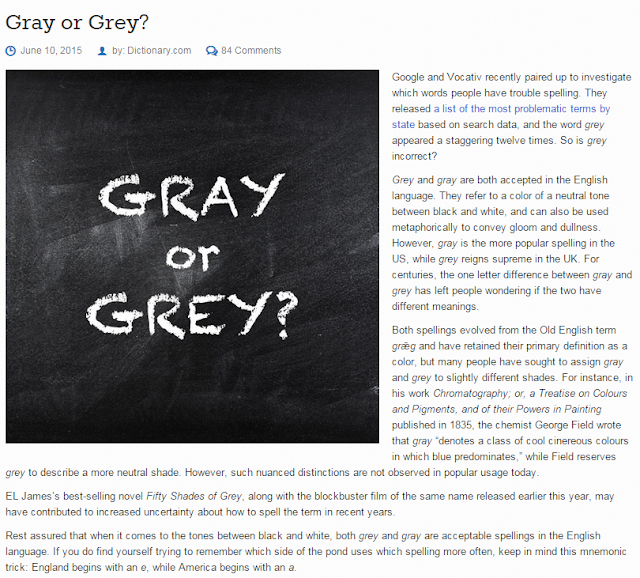清明假期看看喪葬相關英文,靈骨塔、焚屍場與樹葬/海葬這些課本都不會教,學會了真的厲害!
 |
| Picture - Wikipedia |
實用字彙(發音的重音會用藍色標示)
1. 靈骨塔位 a wall niche
2. 靈骨塔 columbarium (單數) columbaria (複數)
3. 骨灰 ashes/ cremated ashes (大量的灰不可數,如火山灰是單數 volcanic ash)
4. 阻礙計畫 to scupper the plan
5. 撿骨 exhume the remains
6. 海葬 a sea burial ( where the ashes are scattered at sea)
7. 樹葬 ash burials in public gardens
8. 停屍間 morgue
9. 掃墓 an ancestral worshiping tradition/Tomb Sweeping
10. 焚屍爐 cremator 焚屍場 crematorium
In Hong Kong, Even the Dead Wait in Line
By Ling Woo Liu
In Hong Kong,
it can be hard just finding somewhere to sit down. The fourth most densely
populated place in the world, the city sees its park benches packed while
strangers share restaurant tables. And for the 40,000 people who die there
every year, it turns out there's no respite 舒緩 休息from the crowds either這句話的意思是指,在香港,即便死了也不得安息,因為沒有位置存放骨灰. While land shortages forced most Hong Kongers to abandon burials in the 1980s, now
the city has run out of space even for cremated ashes骨灰. By some estimates, around 50,000 families are
presently storing their relatives' remains in funeral homes while they wait,
perhaps for years, to secure a one-square-foot wall niche一格塔位 in one of the city's public columbaria骨灰塔 — buildings designed to house cremation urns.
Last month, the
government began accepting applications for 18,500 new niches — the largest
supply in almost a decade — at its nine-story Diamond Hill columbarium. Though
applications could be mailed or faxed in, nearly 1,000 people queued in line大排長龍 to submit their paperwork in person on opening
day. After graphic designer Raymond Wong's father passed away in December, Wong
applied for a niche at another of the city's public columbaria公立的靈骨塔, but was turned away被拒絕 after spaces filled up位子滿了. "Hopefully this time I'll find a place for my father so he
can finally rest," says Wong, while waiting in line at Diamond Hill with
his mother.
Though the
government plans to release 37,000 new niches by 2012, that supply will only
meet the demand of a single year's cremations. By 2016, there will be no space
in public or private columbaria for the remains of up to half of the people who
die each year, according to government estimates. The construction of new
columbaria is regularly mooted經常被拿來討論/經常成為討論的主題, but neighborhood resistance scuppersthe plans殺傷或是阻礙計畫. Residents worry that proximity to such buildings will bring them
bad feng shui and lure large crowds during
ancestral-worship festivals.(住戶因為擔心風水不希望陽宅陰宅靠太近 又擔心自家附近建了骨灰塔之後,每年清明會因為掃墓人絡繹不絕而吵死,所以反對自家附近建設靈骨塔)
"We Chinese call a place for the dead yum chaak, and a place for the
living yeung chaak. They
cannot be mixed," says Kenneth Leung, a funeral coordinator. "Nobody
wants cemeteries or columbaria near their homes — yet everybody needs
them."
For wealthy
families, burial is still an option, but permanent plots are scarce稀少 and can cost upward of $30,000. For $3,000,
temporary public plots can be rented for 10 years, after which the family can
renew for another decade, or exhume the remains 撿骨and yield the plot to someone else. Some
residents have sent bodies abroad to bury, particularly in the U.S. and Canada,
or looked across the border to China, but the journey to visit such graves can
be taxing for older relatives. Jockeying使出手段來好達成目的 for burial space in Hong Kong has become so
intense that last year 18 cemetery supervisors were arrested for allegedly accepting bribes接受賄賂 in order to exhume remains before they had fully decomposed完全腐爛.
The
alternatives offered by the government have failed to take pressure off the
system. There are sea scatterings海葬 and ash burialsin public gardens公立園區的樹葬, but longstanding tradition prevents most
families from taking up these space-saving solutions. "My husband didn't
say much," says Wong's 75-year-old mother, Oi Tak-lo. "But he did say
that he didn't want a sea burial. The older generation won't agree with
it."
Yet
something has to give總有人得妥協. Hong Kong's population of 7 million is aging fast. In 2008, 12%
of the population was over the age of 65; by 2036, that number will rise to
26%. The city's death rate has doubled since 1970, leaving the entire funeral
industry scrambling to cope with the rising demand. The government is
installing more efficient cremators 焚屍爐(crematorium火葬場), but today bodies must be stored in morgues停屍間— often two to a compartment — for as long as
two weeks before cremation can be completed.
For Oi, the
wait is an unwelcome source of stress as she grieves the loss of her husband of
40 years. "I just want to get this over with so my heart can be at peace," 快點把這事情做完好了卻一樁心願she says. Sadly for Oi and thousands of other
bereaved喪親者, that peace might be a long time coming.










留言
張貼留言